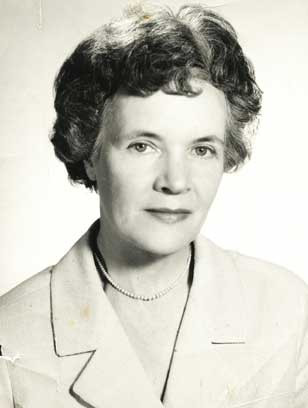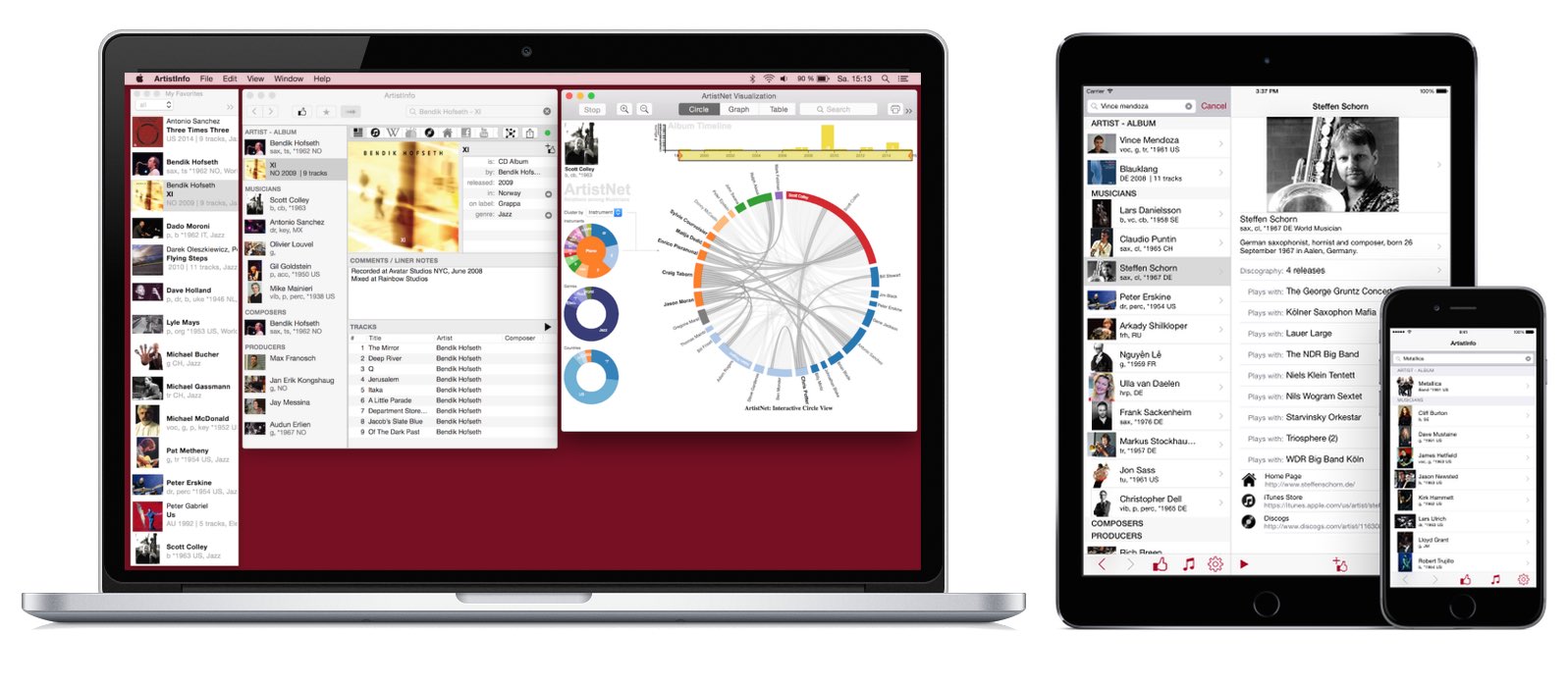
Alice M. Moyle
AU
World
A.k.a. Dr. Alice Marshall Moyle AM
Alice Marshall Moyle (nee Brown), was one of the seminal figures in Australian ethnomusicology and founding members of the Australian Institute of Aboriginal Studies (AIAS). Music was ever present in the home where she was born in Bloemfontein, South Africa. As a child, she was deeply impressed by her first encounter with group singing - a full-throated chorus of African women singing outdoors as they worked over tubs of washing. These memories were instrumental in guiding her towards a career in ethnomusicology, part of which included a deep commitment to the archiving of field recordings. Her family, who had originally lived in Australia, returned in 1912. While her father’s side of the family excelled in business, she chose to follow the love of music and scholarship from her mother’s side, gaining a Bachelor of Music degree from the University of Melbourne in 1930 and subsequently becoming a music teacher and music critic. In 1933 she married John Murray Moyle, a multi-talented kindred spirit who was one of the finest technical journalists in his field and a pioneer in electronics and sound recording. They had two daughters, Josephine and Carolyn. Alice Moyle took part in the vigorous post-war intellectual life in Sydney and was attracted to the University of Sydney by the appointments of John Anderson, Professor of Philosophy and Donald Peart, Foundation Professor of Music. Her B.A. (Hons.) degree, completed in 1954, was on the music of ancient Greece, but her research focus on Aboriginal music developed during graduate studies. A lecture by Professor A.P. Elkin illustrated by some sound recordings of Australian Aboriginal singing from the north of Australia inspired her to follow a new direction, and analyses of some of those recordings appear in her 1957 Master’s thesis. During this time she also served as a Teaching Assistant at the newly formed Music Department at Sydney University. In 1959, the year before his death, John Moyle encouraged her to travel to the Northern Territory to make some of her own recordings, building some audio equipment especially for her. That trip, from Alice Springs to Uluru and Bagot, motivated her to begin serious study of Aboriginal music. Fortuitously, the new Canberra-based AIAS was established around this time and she, as a founding member, was able to ensure that Aboriginal music became one of its research priorities. In the early to the mid-1960’s the Institute provided financial support for her field trips to record Aboriginal music from many areas across the north of Australia. Widowed in 1960 with two daughters, she had to work especially hard, both to establish herself as a serious scholar in the new field of ethnomusicology and to manage the heavy equipment and arduous field trips. On 13 June, 1963 she began her career at the AIAS as Research Fellow, and later, Research Officer in Ethnomusicology, recording over 400 tapes and analyzing music from Cape York, the Gulf of Carpentaria, Arnhem Land, the Kimberleys and Central Australia. Her wide-ranging work has included the documentation of Aboriginal sound instruments, the history of Aboriginal music and dance through film, field recordings, archaeo-musicology, analysis, taxonomy, and the cataloguing and indexing of ethnomusicological material held in the Institute. She valued highly her relationships with Aboriginal colleagues and ensured that they received full credit for their collaborations with her. She worked especially closely with Gula Lalara, a leading performer and elder of the Anindilyakwa people of Groote Eylandt who took much time to explain the stories behind his songs and their musical complexities. Alice took many opportunities to emphasise the vital importance of the Indigenous cultural heritage material held at the AIAS to Indigenous people and to other Australians. She lamented the lack of Indigenous music teaching materials within the Australian education system, stating that appreciation of Indigenous cultures will only come by “a formidable amount of training". Alice Moyle’s research involved examining Aboriginal music within its entire performance context, including music and dance, leading her to work with scholars in other disciplines. Her exacting method of eliciting song texts involved recording a performance, then playing back each song for the singer to speak the song words. More than a dozen linguists, including Arthur Capell, Ken Hale and Geoffrey O'Grady, assisted her with phonetic transcription and translation of this large corpus of material. In conjunction with the Elizabethan Theatre Trust, she arranged for an ethnochoreologist, Elphine Allen, to document dance movements during a filming expedition to Groote Eylandt in 1969. Groote Eylandt music held a special appeal for her and one of her final projects involved working with the linguist Judith Stokes to compile a large corpus of Anindilyakwa clan song texts, recordings and notations. With characteristic modesty, Alice Moyle considered that what she wrote about Aboriginal music might well be superseded by later scholarship, but that her recordings would become more precious and significant as time passes. With this in mind, she edited material from her field tapes to produce 11 discs of Aboriginal and Torres Strait Islander music for publication by the AIAS and one for Unesco. Ever concerned with the general lack of knowledge of Australian Aboriginal music, she prepared an educational kit, gave numerous radio interviews, and wrote many articles for encyclopedias and journals. Historical recordings fascinated her; she corresponded with many scholars and organizations both within Australia and overseas in an effort to locate and to obtain copies of all known recordings that had been made of Australian Aboriginal and Torres Strait Islander music. This interest in technical material and historical recordings was invaluable for developing the focus of the Sound Archive of the AIAS. Speaking from a wide knowledge of recording techniques, she was able to persuade museum staff in Melbourne and Tasmania that wax cylinder recordings, such as the W. Baldwin Spencer (1901, 1912) and Fanny Cochrane Smith (1899, 1903) collections, should be transferred to a more accessible and permanent medium. One of her most famous discoveries came in the late 1970s when she located in the British Institute of Recorded Sound the wax cylinders made by the Cambridge Expedition to the Torres Strait in 1898, which were the earliest known ethnographic recordings made in Australia, and negotiated for tape copies to be made for the AIAS. When she began work with the AIAS, she considered the possibility of further study and floated the idea with W.E.H. Stanner, who was at the time the first Executive Officer of AIAS. Monash University attracted her because of the work on Australian Aboriginal music done by its professor of music, Trevor Jones. While studying there she taught courses in non-Western music, building up a record collection of music from around the world, but concentrating on the Pacific and Australia. Her PhD, completed in 1974, is in three volumes and identifies and compares musical styles of Aboriginal music in the north of Australia, defining them in terms of the instrumental accompaniments and the textual and melodic characteristics. Alice Moyle was keenly interested in new technology as it applied to recording, analysis and retrieval. The AIAS lent up-to-date sound recording equipment for her field trips and she was always conscious of the advantages of each new machine. In the 1960s she was experimenting with electronic analysis of melodic lines, working with Ben Suchoff of Columbia University for the GRIPHOS project that classified tunes according to a standardized set of criteria. In the early 1970s she worked with Charles Seeger at UCLA, playing recordings into his specially-designed device, the melograph, which generated large scrolls of graphic representations of music. She also designed systems for computerized indexes, such as her “Computerized Index of Australian Aboriginal Song Words”, and the “Computerized Index of Aboriginal Songs: Cape York Area”. She was active in many professional organizations both nationally and internationally, ranging from the Society for Ethnomusicology to the International Council for Traditional Music, to which she was elected Honorary Member. Her work for the International Association of Sound and Audiovisual Archives involved serving on the Cataloguing Committee and presenting papers in the UK and Hungary as well as being Editor of the Australian National Branch Newsletter of that organization. She was president of the Musicological Society of Australia from 1982 to 1983, and held offices in the local ACT Branch. Her generosity in mentoring countless students and colleagues will be remembered especially. At the ANU, the Alice Moyle Prize is awarded to an outstanding music student each year and a yearly Alice Moyle lecture is held at the annual meetings of the Australasian Sound Recordings Association. Alice Moyle became a Member of the Order of Australia – General Division on Australia Day 1977, was elected as an Honorary Fellow of the Australian Academy of the Humanities on 4 November 1994, and received a degree of Doctor of Music (honoris causa) from the University of Sydney in 1989 and another from the University of Melbourne in 1995. A consummate diplomat, a most exacting scholar and an elegant lady with a wonderful sense of humour, she met all situations with a marvelous equanimity. One of her favourite words was “precise”, and she often recited the words of her grandfather, “Be sure of your facts and careful of your inferences”. Alice Moyle is survived by her younger sister Dorothy, her two daughters, Carolyn and Josephine and their families, and scores of friends and colleagues.
Discography
| Title | Artist | Year | Type |
|---|---|---|---|
| Songs From The Northern Territory 1 | Australian Aborigines, Alice M. Moyle | 1991 | Album |
| Aboriginal Sound Instruments | Alice M. Moyle | 1978 | Album |
